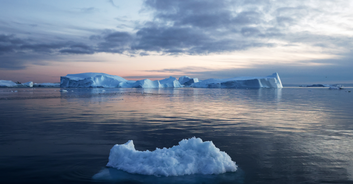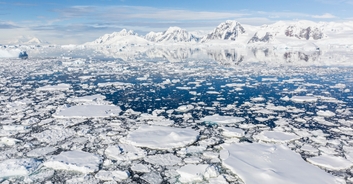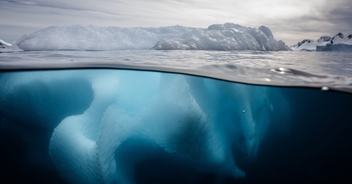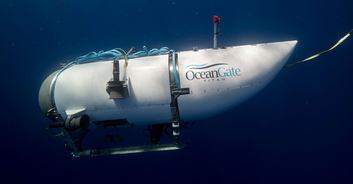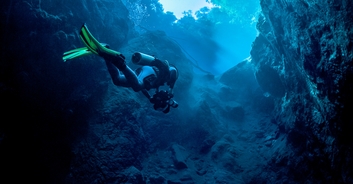A lot of people out there probably think that NASA do most of their business out in space, but that's not at all true. As well as sending people to the moon and letting astronauts hang out on the ISS, NASA also spends a great deal of its time doing research right down here on planet Earth - and they have a whole department dedicated to studying ice.
Sure, this might not sound like the most thrilling job in the world, but sometimes there are some surprising things lurking out there in the icy waters of the ocean.
Last week, for instance, scientists spotted a perfectly rectangular iceberg floating about in the Antarctic.
Originally, they only posted a picture of a portion of the icy structure, as can be seen below:

It almost looks too perfect to be real, and I'm sure many of us probably assumed that it was photoshopped at first. It is legit, however, and is a type of rare iceberg known as a "tabular iceberg". These structures are characterised by their sharp, angular sides, and are formed when large chunks of ice suddenly break loose from a big mass.
Jeremy Harbeck, a senior support scientist with NASA's Operation Icebridge, said, "I thought it was pretty interesting. I often see icebergs with relatively straight edges, but I've not really seen one before with two corners at such right angles like this one had."
And it turns out that Harbeck had not even set out with the intention of photographing the satisfyingly geometric block.
"I was actually more interested in capturing the A68 iceberg that we were about to fly over," he said, "but I thought this rectangular iceberg was visually interesting and fairly photogenic, so on a lark, I just took a couple photos."
And this is what it looks like in all its glory:

As it turns out, though, this wasn't the only rectangular iceberg that was spotted on the trip. Another shot of the 'berg from a different angle shows a second oblong-shaped structure hiding behind the engine of the plane.

NASA’s Operation IceBridge is not just a fun outing to check out cool-looking icebergs, however. In fact, it's part of an important ongoing mission to monitor polar regions and track the planet’s global climate system.
At the moment, Harbeck and others are in the middle of a five-week project focused on charting icebergs in the Northern Antarctic Peninsular, as monitoring their structure and location can help determine information about global warming and climate change.

According to experts, it's difficult to calculate exactly how big the main rectangular iceberg is, but they think it may be a little over 1.6km (1 mile) across. However, because the the part of the 'berg that's on the surface comprises only around 10 per cent of its entire size, there's no telling how much of it is present beneath the surface.

